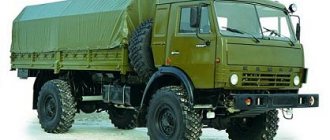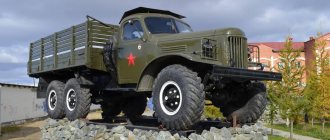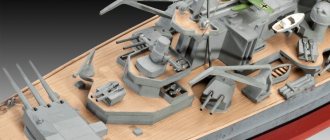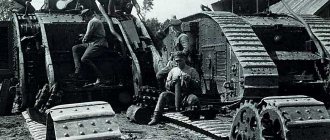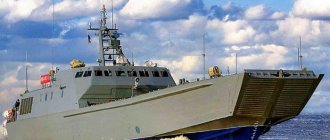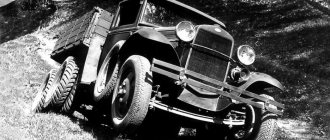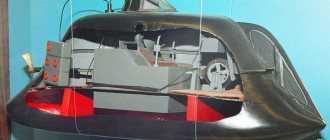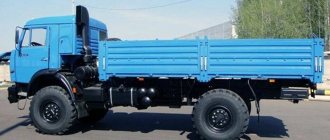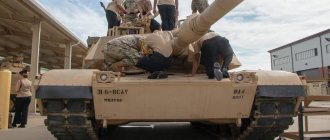Digital cameras
One of the most everyday items of our day that is a by-product of military technology is the digital camera. Initially, they were created for aerial and space reconnaissance in order to photograph with high resolution objects and military activity of a potential enemy.
Cameras were developed in the 1960s and 1970s at the height of the Cold War. The technology then evolved into the DSLR cameras that everyone is familiar with today. One of the first commercially available digital cameras was released in the 1980s. And in the early 2000s they were built into mobile phones.
Anton Zheleznyak Technical and engineering expert
Here Steven Sasson, a civil engineer, is still considered a pioneer. Although the military, of course, contributed to the development of the topic.
GPS
Another military side effect is the ubiquity of global positioning system (GPS) devices. Developed by the US military between the 1970s and 1990s, GPS was designed to help with military logistics, target identification, mapping, asset tracking, and more.
Under the name NAVSTAR GPS, this system was born in the late 70s, when the US military department launched its first experimental satellites into orbit. By the mid-90s, the fully deployed constellation included more than 20 GPS satellites.
Unlaunched NAVSTAR satellite
The first commercial receivers appeared in the late 1980s, such as the Magellan NAV 1000. Today, many cars and mobile phones have built-in GPS systems.
Internet
Another technology whose appearance we owe to military developments is the Internet (and, accordingly, the World Wide Web). Developed at the turn of the 60s and 70s, the ARPANET network of the US Defense Advanced Research Projects Agency (DARPA) became the predecessor of the Internet. And laid down the basic components of the system in its modern form.
Map of the ARPANET in 1974
This network, with its complementary TCP/IP data transmission model, became the technical basis of the Internet, which we now use almost continuously. By the mid-1990s, the Internet in the United States had become fully commercialized, spanning the entire planet and changing the way we work, communicate, and share information beyond recognition.
Alexey Kostenkov
The text does not clearly reflect why the US military needed the ARPANET network. It was created in order to maintain an efficient communication system even in the event of a nuclear war - when many of its nodes would be disabled.
Content
- 1 History 1.1 Ancient technologies
- 1.2 Postclassical technology
- 1.3 Modern technologies 1.3.1 Armies
- 1.3.2 Naval
- 1.3.3 Organization and finances
- 2.1 Space
- 3.1 Developing area 3.1.1 Cyberspace
Drones and quadcopters
Another common technology that can trace its origins to military developments is drones. Originally developed as military unmanned aerial vehicles (UAVs), they were born for remote surveillance and intelligence gathering in hostile parts of the world.
The concept of military UAVs is not new. The first combat use of something like this happened in the middle of the 19th century. Then Austrian troops released balloons without crews, with clockwork mechanisms and incendiary bombs, onto the besieged Venice. At the beginning of the twentieth century, unmanned airplanes appeared as targets for training fighter pilots and air defense crews.
The technology was developed during World Wars I and II, and the US Air Force developed unmanned aircraft in the 1950s. Drones in the modern sense came into operation in the 1990s, and early models managed to fight in 1991 in the Persian Gulf.
Well, commercial drones appeared in the mid-to-late 2000s.
Links[edit]
- Wescott, David (1999). Primitive Technologies: A Book of Earth Skills
. Layton, Utah: Society for Primitive Technology, Gibbs Smith. paragraph 60. ISBN 978-0-87905-911-8. - Lahr, M. Mirazon; Rivera, F.; Power, RK; Mounier, A.; Copsey, B.; Crivellaro, F.; Edung, J. E.; Fernandez, J. M. Milo; Chiari, K. (2016). "Intergroup violence among early Holocene hunter-gatherers in Western Turkana, Kenya". Nature
.
529
(7586):394–398. Bibcode: 2016Natur.529..394L. DOI: 10.1038/nature16477. PMID 26791728. S2CID 4462435. - Iron in Africa: History Revisited: UNESCO. Portal.unesco.org. Retrieved November 20, 2014.
- ^ ab Tucker, Spencer (2010). Global Timeline of Conflict
. Santa Barbara, CA: ABC-CLIO, LLC. pp. 6–7. ISBN 978-1-85109-672-5. - "Military Equipment Teacher's Guide" (PDF). 2001-11-26: 1 . Retrieved November 20, 2014. Quote journal requires |journal=(help)
- ^ abcdefghijklmnop Ping-Yü, in collaboration with Ho; Gwei-Jen, Lu; Ling, Wang (1986). Science and civilization in China. The Gunpowder Epic (1st ed.). Cambridge: Cambridge UP ISBN 9780521303583. Retrieved November 20, 2014.
- Jump up
↑ Needham, Volume 5, Part 7, 224–225. - Gwei-Djen, Lu; Joseph Needham; Fan Chi-Sing (July 1988). "The oldest image of a bomber." Technology and Culture
.
29
(3):594–605. DOI: 10.2307/3105275. JSTOR 3105275. - Partington, J. R. (1960). A History of Greek Fire and Gunpowder (Johns Hopkins Paperback ed.). Cambridge: Heffer. item 211. ISBN. 9780801859540. Retrieved November 20, 2014.
- "Pak's N-Arsenal Missile Support". Times of India
. April 21, 2008. Retrieved August 30, 2011. - Max Booth, War Made New: Technology, War and the Course of History, 1500 to Today
(Penguin, 2006). - B. H. Liddell Hart, "Military Forces in the Art of War: Armies", in J. P. T. Bury, ed., The New Cambridge Modern History: volume X: The Zenith of European Power 1830-70
(1967), 302-330. - Michael Lewis, "Military Forces in the Art of War: Naval Powers," in J. P. T. Bury, ed., The New Cambridge Modern History: Volume X: The Zenith of European Power 1830-70
(1967), 274-301. - ↑
David K. Brown,
Dreadnought Warrior: Warship Development 1860–1905
(2003). - Michael Howard, "The Armed Forces." In F. H. Hinsley, ed. "The New Cambridge Modern History: Volume XI: 1870-1898" (1962), pp. 204-42.
- ↑
John Sumida,
In Defense of Naval Supremacy: Finance, Technology and British Naval Policy 1889-1914
Naval Institute Press, 2014. - McBride, William M. (1992). "The Greatest Patron of Science"? Alliance of Naval Academies and U.S. Naval Research, 1896-1923." Journal of Military History
.
56
(1): 7–34. DOI: 10.2307/1985709. JSTOR 1985709. - Jeffrey, Thomas E. (2016). "'Commodore' Edison Joins the Navy: Thomas Alva Edison and the Naval Advisory Board". Journal of Military History
.
80
(2): 411–46. - ↑
L. F. Haber,
The Toxic Cloud: Chemical Warfare in the First World War
(Oxford UP, 1986). - ↑
Harry Bondy, "Postmodernism and the Source of Military Power in the English-Speaking West."
Military and Society
31#1 (2004): 31-61. - ↑
Richard S. Friedman and Bill Gunston,
Advanced Warfare: An In-depth Study of the Newest Weapons and Methods of Warfare Today and in the 21st Century
(1985) - Everett Mendelsohn, Merritt Rowe Smith, and Peter Weingart, eds. Science, Technology and the Military
(Springer Science & Business Media, 2013). - Lundmark, Martin; Andersson, Kent; Bull, Peter; Dansari, Marcus (2019). Technology Forecast 2022 - Military Utility of Future Technologies: Report on Seminars at the Military Technology Department of the Swedish Defense University (SEDU). Försvarshögskolan (FHS).
- Lundmark, Martin; Andersson, Kent; Bull, Peter; Dansari, Marcus (2019). Technology Forecast 2022 - Military Utility of Future Technologies: Report on Seminars at the Military Technology Department of the Swedish Defense University (SEDU). Försvarshögskolan (FHS).
- Johnson, James (10/21/2019). “The end of the military-technological Pax Americana? Washington's Strategic Responses to Chinese AI Military Technologies." Pacific Review
.
0
: 1–28. DOI: 10.1080/09512748.2019.1676299. ISSN 0951-2748. - Extance, Andy (2015-05-28). "Military Technology: Laser Weapons Get Real". Nature News
.
521
(7553):408–410. Bibcode: 2015Natur.521..408E. DOI: 10.1038/521408a. PMID 26017426. - ^ ab as4u.cz, sro "REQUIREMENTS FOR FUTURE MILITARY ROBOTS SUPPORTING MOBILITY - Defense and Strategy". www.obranaastrategie.cz
. Retrieved December 6, 2022. - Evans, Woody (2019). "Transhumanism (dot) Mil: A bibliometric analysis of technoprogressive terms in military publications". Quote journal requires |journal=(help)
- Birmaoglu, Serhat; Sarytas, Ozcan (03/01/2017). "The Changing Characteristics of War and the Future of Military Research and Development." Technological Forecasting and Social Change
.
116
: 151–161. DOI: 10.1016/j.techfore.2016.10.062. ISSN 0040-1625. - Danyk, Yuri; Malyarchuk, Tamara; Briggs, Chad (2017). "Hybrid warfare: high technology, information and cyber conflicts". Connections
_
16
(2): 5–24. doi:10.11610/Connections.16.2.01. ISSN 1812-1098. JSTOR 26326478. - Pellerin, Cheryl. "DARPA's Plan X Uses New Technologies to 'See' Cyber Effects". Press Service of the American Armed Forces. US Department of Defense. Retrieved November 21, 2014.
Adhesive tape
Scotch tape is a common everyday item that began its life in military luggage. This strong, durable and highly adhesive tape was born during World War II. It consisted of rubber cement applied to a durable backing of thin canvas.
This tape was waterproof and excellent against dirt, and was also useful for repairing military equipment, vehicles and weapons. The first semblances of adhesive tape appeared in the early 1900s, but adhesive tape in its modern form was invented by an artillery factory worker, Vesta Stodt.
She thought that the shell boxes sealed with paper and wax were not always easy to open in the turmoil of battle. Vesta suggested using strong adhesive tape instead of paper. The idea took off and Johnson & Johnson began producing the first samples.
After the war, duct tape became readily available in hardware stores around the world.
Anton Zheleznyak Technical and engineering expert
Again, Mrs. Stodt improved the design and obtained a more practical and reliable material rather than inventing something completely new.
Modern weapons
Evidence of the effectiveness of the modern weapons of the Russian Federation was the “Syrian exam”, where the latest military equipment and technologies were tested in real war conditions. As a result of the assessment of Russian weapons, several states immediately announced their desire to enter into contracts for the supply of weapons.
- India – S-400 air defense worth $2 billion;
- Algeria - 12 SU-34 bombers - $600 million;
- Vietnam - 100 T-90 tanks - $300 million;
- Egypt - 46 K-52 Alligator helicopters - $1.5 billion.
This is irrefutable proof of the high level of the latest technologies of the Russian army. Russia possesses quite powerful weapons that ensure security and protect the borders of the state. These are Pantsir-SA, TOR-M2DT anti-aircraft missile systems, Topol-M, S-400, Yars, Iskander Bal, Bastion missile and anti-missile systems, the notorious Armata tank, MiG-29 and Su-30SM fighters, as well as many other equipment .
microwaves
The microwave we are used to - or, more precisely, its magnetron - was also developed for military purposes. The magnetron was part of the radar systems of World War II. The ability to produce ultra-high-frequency electromagnetic waves—microwaves—has proven useful for heating organic matter.
Percy Spencer, a self-taught American engineer working for Raytheon, noticed how microwaves from a working magnetron melted a chocolate bar in his pocket. In October 1945, Raytheon filed a patent for the use of microwaves to heat food, and the first commercially available device, the RadaRange, appeared in 1947.
Percy Spencer in front of early microwave equipment
The rest is clear.
New small arms
Kalashnikov 15 assault rifle
The famous "Kalash" has become even more perfect!
AK 15 is designed using innovative technologies. The ability to shoot while holding a Kalash in one hand has been implemented, bringing it into combat mode in a matter of moments. Three firing modes have been introduced - triple has been added to automatic and single.
The universal barrel of the new AK allows you to fire grenades from various manufacturing companies. The design of the Kalash includes Picatinny rails intended for mounting sights. It is possible to replace the telescopic butt with a plastic one.
Other important improvements:
- double-sided placement of the shutter button with mass displacement, which improved the accuracy of fire;
- shifting the magazine lever back, making the machine guns more convenient;
- simplification of the design of a standard stock;
- closing the slot for ejecting cartridges;
- reduction of muzzle brake;
- improved noise reduction;
- installation of a sight with the widest range of views.
The AK-15 went into serial production in 2016. Today, along with the AK-12, it is in greatest demand on the CIS small arms market.
Double-medium ADS machine
ADS - a machine gun for shooting everywhere: on land and in water
The double-medium special machine gun ADS is an unsurpassed novelty that shoots perfectly both on land and under water. The option of firing from the left or right shoulder adds greater versatility.
The development of the ADS, which began at the Tula KBP, was completed in 2007, followed by careful fine-tuning based on test results. In 2013, the assault rifle was approved for armament and began to be supplied to special forces of the Russian Federation.
SVLK-14S
The ultra-precise rifle from Lobaev Arms is in first place in the world in terms of aimed firing range.
SVLK-14S “Twilight” is an ultra-precise, longest-range sniper weapon in the world, capable of accurately hitting targets at a distance of 1.5-2 km and even up to 2, 3 km. The rifle was created in 2012 by Vladislav Lobaev, produced under his personal brand “Lobaev Arms” both by order of the Russian law enforcement agencies and non-governmental buyers.
Sniper complex 6S8
The 6S8 large-caliber rifle penetrates even light armor.
6S8 is a large-caliber sniper rifle, which is manufactured at the plant named after. Degtyareva. Entered service in June 2013. Designed to destroy lightly armored and unarmored enemy vehicles, as well as openly located manpower at a distance of up to 1.5 km with 12.7x108 mm caliber cartridges.
T-5000 OrSys
T-5000 - high-precision rifle
ORSIS T-5000 rifle - high-precision sniper weapon with manual reloading. An important feature is a sliding, longitudinally rotating bolt, locked with two lugs. The barrel is threaded for installing a muzzle brake-compensator.
The trigger mechanism is adjustable according to the pull force and the free movement of the trigger. You can install a trigger of any geometry on a rifle. Magazine capacity is five or ten rounds.
Jet engines
Another side effect of military technology was the jet engine, which is now used every day.
Developed by Frank Whittle in the late 1920s, the device only saw full implementation amid the horrors of World War II.
Frank Whittle
Whittle registered a patent for it in 1930. The German Hans von Ohain soon created his own version - apparently unaware of Whittle's development. It was his developments that were the first to go into series.
Heinkel He 178 prototype aircraft with Ohain turbojet engine
After the war, jet engines quickly replaced propeller engines, first in military and then in civilian aircraft, such as the De Havilland Comet, which took flight in the 1950s.
Comet prototype
History[edit]
Main article: History of military equipment
This section is divided into broad cultural developments that influenced military technology.
Ancient technologies[edit]
The first use of stone tools may have begun during the Paleolithic period. The earliest stone tools date back to 3.3 million years ago at the site of Lomekwi, Turkana. The diversity of stone tools emerged during the Pleistocene period, which ended about 12,000 years ago. [1] The earliest evidence of warfare between the two groups is recorded at the Nataruk site in Turkana, Kenya, where human skeletons show severe traumatic injuries to the head, neck, ribs, knees and hands, including an embedded obsidian blade in the skull. , provide evidence of intergroup conflict between groups of nomadic hunter-gatherers 10,000 years ago. [2]
Humans entered the Bronze Age when they learned to smelt copper into an alloy with tin to make weapons. In Asia, where copper-tin ores are rare, this development was delayed until the beginning of the bronze trade in the third millennium BC. In the regions of the Middle East and Southern Europe, the Neolithic period is followed by the Bronze Age, but in other parts of the world the Copper Age represents the transition from the Neolithic to the Bronze Age. Although the Iron Age generally follows the Bronze Age, in some areas the Iron Age intrudes directly into the Neolithic from outside the region, with the exception of sub-Saharan Africa, where it developed independently. [3]
The first large-scale use of iron weapons began in Asia Minor around the 14th century BC and in Central Europe around the 11th century BC, and later in the Middle East (ca. 1000 BC), as well as in India and China. [4]
The Assyrians are credited with the introduction of cavalry in warfare and the widespread use of iron weapons by 1100 BC. The Assyrians were also the first to use iron-tipped arrows. [4]
Further information: List of pre-modern military weapons
Postclassical technology[edit]
Illustration of a trebuchet catapult, described in the Wujing Zongyao
1044 years.
Wujing zongyao
(
Fundamentals of the Martial Arts
), written by Zeng Gongliang, Ding Du, and others under the orders of Emperor Renzong around 1043 during the Song Dynasty, shows Eras' focus on promoting intellectual issues and military technology due to the importance of the war between Song and Liao, Jin and Yuan to the north from them. The book covers topics of military strategy, training, production and use of modern weapons. [5]
Chinese flamethrower from the Wujing Zongyao
1044 AD, Song Dynasty.
Advances in military technology helped the Song Dynasty defend against hostile neighbors to the north. The flamethrower found its origins in Byzantine-era Greece, using Greek fire (a chemically complex, highly flammable gasoline liquid) in a siphon hose device by the 7th century. [6]:77 The earliest mention of Greek fire in China was made in 917, written by Wu Renchen in his Spring and Autumn Chronicles of the Ten Kingdoms
.
[6]:80 In 919, a siphon projector-pump was used to spread "high fire oil" that could not be filled with water, as recorded by Lin Yu in his Wuyue Beishi, hence the first reliable mention in China of a flamethrower that used a Greek chemical solution fire (see also Pen Huo Qi). [6]:81 Lin Yu also mentioned that the "oil of violent fire" ultimately came from one of China's maritime contacts in the "southern seas", Arabia Dashiguo. [6]:82 At the Battle of Langshan Jiang in 919, King Wenmu's navy from Wuyue defeated the Huainan army from the state of Wu; The Wenmu's success was aided by the use of "fire oil" (huoyu) to burn their fleet, marking the first time the Chinese used gunpowder in battle. [6] : 81–83 The Chinese pioneered the use of two-piston bellows to pump gasoline from a single cylinder (up and down stroke) ignited at the end with a slow-burning powder match to shoot a continuous stream of flame. [6] : 82 This device appeared in the description and illustration of the Wujing Zongyao
of 1044. [6]:82 While suppressing the Southern Tank in 976, early Song naval forces confronted them on the Yangtze River in 975. The Southern Tang forces attempted to use flamethrowers against the Song fleet, but were accidentally destroyed by their own fire when a strong wind blew in their direction. [6] : 89
Further information: Science and technology of the Song dynasty
Although the destructive effects of gunpowder were described in the previous Tang Dynasty by a Taoist alchemist, the earliest developments of the cannon barrel and projectile fire cannon were found in the late Song of China. The first artistic depiction of a Chinese "fire spear" (a combination of a time-fire flamethrower and a gun) was in a Dunhuang Buddhist mural, dated around 950. [7] These "fire spears" were widely used by the early 12th century, with hollow bamboo poles as tubes for firing sand particles (for blinding and suffocation), lead pellets, pieces of sharp metal and pottery shards, and finally large gunpowder arrows and missile weapons. [6]: 220–221 Eventually, the perishable bamboo was replaced by hollow cast iron tubes, as was the terminology of these new weapons, changing from the "fire spear" of the huoqiang to the "firearm" of the huo tong. [6]:221 This ancestor of the gun was supplemented by the ancestor of the gun that the Chinese had called the "multi-bullet magazine explosive" bai jiulian zhu pao since the 13th century, a tube of bronze or cast iron that was filled with about 100 lead balls. [6]: 263–264
The earliest known depiction of a pistol is a cave sculpture in Sichuan, dating from 1128, which shows a figure carrying a vase-shaped bombard that shoots flames and a cannonball. [8] However, the oldest existing archaeological discovery of a gun with a metal barrel comes from excavations in Heilongjiang, China, dating back to 1288. [6] : 293 The Chinese also discovered the explosive potential of filling hollow cannonballs with gunpowder. Written later by Jiao Yu in his Huolongjing
(mid-14th century), this manuscript records an earlier Song era cast iron cannon known as the "flying cloud thunderbolt eruption" (fei yun pi-li pao). The manuscript stated that:
As noted earlier, the change in terminology for these new weapons during the Song period was gradual. Early Song cannons were at first called the same as the Chinese trebuchet catapults. A later Ming dynasty scholar known as Mao Yuanyi explained this use of terminology and the true origin of the cannon in his text Wubei Zhi
, written in 1628:
Huolongjing
The 14th century was also one of the first Chinese texts to detail the use of explosive landmines, which were used by the late Song Chinese against the Mongols in 1277 and subsequently used by the Yuan Dynasty.
The innovation of the exploded land mine was accredited by one Luo Qianxia in the campaign of defense against the Mongol invasion by Kublai Khan.[6]:192 Later Chinese texts revealed that the Chinese land mine used either a rip cord or the movement of a mine—a trap pin releasing a falling weight that rotated a steel flint wheel, which in turn created sparks that ignited the chain fuses for the landmines. [6]:199 Additionally, in the late 13th century, Song used the earliest known gunpowder rockets in warfare, [6]:477 its earliest form was the archaic Firebolt. When the northern Song capital Kaifeng fell to the Jurchens in 1126, Xia Shaozeng wrote that 20,000 fire arrows were given to the Jurchens in their conquest. An even earlier Chinese text, the Wujing Zongyao
("Collection of Essential Military Techniques"), written in 1044 by the Song scholars Zeng Kongliang and Yang Weide, described the use of an arcubalist of three spring or triple bows that fired bolts that held packets of gunpowder near the arrowhead. [6] : 154 Going back even further, Wu Li Xiao Shi (1630, second edition 1664) Fan Yizhi states that fire arrows were given to Emperor Taizu of Song (r. 960–976) in 960. [9]
Further information: Postclassical history
Modern technologies[edit]
Armies[edit]
Bronze Dardanelles cannon on display at Fort Nelson in Hampshire. Similar guns were used by the Ottoman Turks during the siege of Constantinople in 1453.
A painting showing the Mysorean army fighting British troops with Mysorean rockets. [10]
Islamic gunpowder empires introduced numerous advanced types of firearms, cannons, and small arms. During the period of proto-industrialization, newly invented weapons were used in Mughal India.
The rapid development of military technology had a huge impact on the armies and navies of industrialized countries in the years 1740-1914. [11] In land combat, the importance of cavalry diminished, while infantry was transformed by the use of faster-loading precision rifles and smokeless powder. Machine guns were developed in the 1860s in Europe. Rocket artillery and Mysore rockets, first developed by the Indian Muslim Tipu Sultan, became more powerful as new high explosives (nitroglycerin based) became available during the Anglo-Mysore Wars, and the French introduced much more accurate rapid-fire field artillery. The use of railroads and the telegraph greatly improved logistics and communications support for ground combat. Industrialization provided a base of factories that could be converted to produce munitions as well as uniforms, tents, wagons, and basic necessities. Medical facilities were expanded and reorganized through improved hospitals and the creation of modern nurses, exemplified by Florence Nightingale in Britain during the Crimean War of 1854-56. [12]
Marine [edit]
Naval warfare was transformed by many innovations, [13] especially the coal-based steam engine, long-range precision naval guns, heavy steel armor for battleships, mines and torpedo mounting, followed by the torpedo boat and destroyer. Coal was eventually replaced by the more efficient oil after 1900, but in the meantime international navies had to rely on a network of coal stations for refueling. The British Empire provided them in abundance, while the French Empire provided them to a lesser extent. Military schools arose when military theory became a specialty; cadets and senior leaders were taught the theories of Jomini, Clausewitz and Mahan and participated in board war games. Around 1900, entirely new innovations such as submarines and airplanes appeared, which by 1914 were quickly adapted for warfare. The British HMS Dreadnought (1906) incorporated so much of the latest technology in weapons, propulsion and armor that it rendered all other battleships obsolete in one fell swoop. [14]
Organization and finance[edit]
New financial instruments were developed to finance the rapidly increasing costs of warfare, such as popular bond sales and income taxes, as well as the funding of permanent research centers. [15] [16] Many 19th century innovations were largely invented and promoted by single men with small teams of helpers, such as David Bushnell and the submarine, John Ericsson and the battleship, Hiram Maxim and the machine gun, Alfred Nobel and high explosives . By 1900, the military began to realize that it needed to rely much more heavily on large-scale research centers that required government funding. [17] They attracted leaders of organized innovation such as Thomas Edison in the United States and chemist Fritz Haber of the Kaiser Wilhelm Institute in Germany. [18] [19]
Super glue
Superglue is an “accidental” product of military research that has found its way into almost every home. Its development dates back to World War II, when scientists were trying to create transparent plastic for optical sights.
In the process, the researchers created an “unsuccessful” substance that stuck to absolutely everything it came into contact with. Under the name cyanoacrylate, it was patented by BF Goodrich in 1942 and commercialized as Eastman #910 in the late 1950s.
Eastman 910 Adhesive Demonstration
Canned food
Finally, another everyday item developed for military purposes is canned food. Because armies march on their bellies, military leaders have tried to find ways to reliably feed their troops during campaigns for thousands of years.
Back in the early 1800s, the French government, under orders from Napoleon, offered a large cash reward to anyone who could develop a way to preserve food for a long time. Inventor Nicolas Appert discovered that cooked food inside a boiled jar does not spoil as long as it remains sealed.
Nicolas Upper and food storage jar
Appert received the prize personally from the emperor and became known as the “father of canning.” His method of sterilization and storage paved the way for every can we opened.
